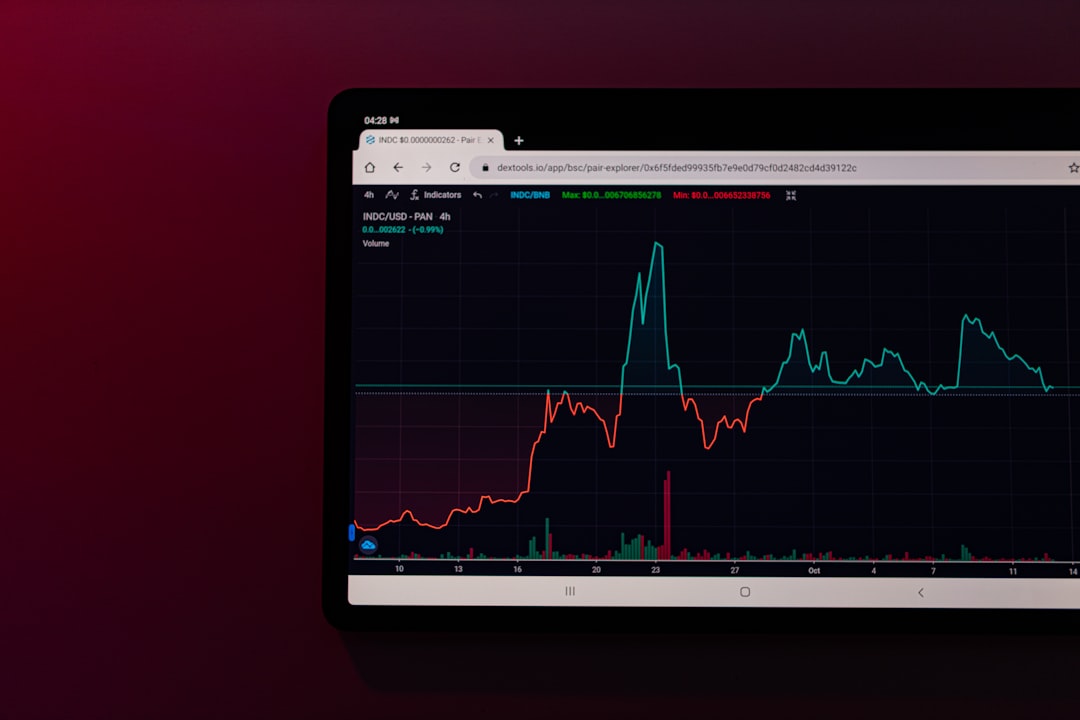Building a Smarter Staking Pool Software Solutions for Seamless Management

In the rapidly evolving world of decentralized finance, staking pools have become a cornerstone for participants seeking passive income while supporting network security. Yet the sheer scale and complexity of managing these pools can overwhelm operators, especially when they rely on disparate tools or manual oversight. The solution lies in building a cohesive, smart software platform that streamlines every step from node monitoring to reward distribution while delivering real-time insights and automation that were once the domain of large infrastructure teams.
The Core of Modern Staking Pools
At its heart, a staking pool is a collective of validators that pool their resources to increase the chances of earning rewards. The software architecture that supports such a pool must balance decentralization with operational efficiency. A well‑designed system typically follows a layered approach: a resilient networking layer that handles peer discovery and communication; a secure execution layer that isolates validator nodes and ensures cryptographic integrity; and a governance layer that facilitates stake delegation, fee management, and consensus rules. Each layer communicates through lightweight APIs, allowing operators to plug in new modules or upgrade protocols without a full rewrite.

By centralizing these components into a single platform, operators can reduce latency, eliminate configuration drift, and achieve near‑zero downtime. Importantly, the software should expose an intuitive dashboard that visualizes network health, node performance, and slashing risk all in a single glance. This transparency is critical because any misstep in stake allocation or key management can result in substantial financial loss.
Key Software Features That Drive Efficiency
The next step is to embed features that directly impact profitability and risk mitigation. First and foremost is dynamic stake allocation. An intelligent scheduler evaluates the current difficulty, commission rates, and network congestion, then reallocates stake across validators to maximize returns. This process relies on predictive analytics that learn from historical data and adjust in real time.
Second, a granular fee management module allows operators to set commission structures that are competitive yet sustainable. The module should support tiered fees based on stake size or performance, automatically adjusting to market conditions. Third, robust key management is non‑negotiable. The software must integrate hardware security modules (HSMs) or multi‑party computation (MPC) schemes to safeguard private keys, ensuring that even if a server is compromised, the keys remain protected.
Fourth, automated health checks are essential. The system should ping each validator node at defined intervals, verify block production rates, and trigger alerts if slashing events are imminent. These checks can be paired with automated rollback procedures that switch to standby nodes, keeping the pool online without manual intervention.
Fifth, the platform should provide a modular plugin architecture. Operators can integrate custom scripts, external data feeds, or third‑party monitoring services. This openness invites community innovation and ensures the pool remains adaptable to new protocols or upgrades without costly rewrites.
Automation and Real-Time Analytics for Optimal Performance
Beyond basic features, modern staking pool software must harness real‑time analytics to stay ahead of market shifts. By ingesting on‑chain metrics such as validator uptime, block rewards, and network churn into a central analytics engine, the platform can generate actionable insights. For example, if a validator’s uptime drops below a threshold, the system can automatically rebalance stake to a more reliable peer, minimizing reward loss.
Predictive modeling also plays a pivotal role. Machine learning models trained on historical block times and reward curves can forecast future reward rates for different validator sets. Operators can then simulate various staking strategies, evaluating the risk‑adjusted return before committing stake.
Furthermore, automation extends to compliance and reporting. A built‑in audit trail records every stake movement, fee calculation, and validator status change. This feature is invaluable for transparency, especially when attracting institutional partners who demand rigorous auditability. The platform can generate quarterly reports in standard formats, streamlining regulatory submissions.

Because staking pools operate 24/7, the software must provide failover mechanisms. High‑availability clusters, active‑active configurations, and disaster recovery plans ensure continuous operation even during network outages. The platform should expose health metrics via Prometheus or similar tools, enabling operators to set up proactive alerts for any anomalous behavior.
The user experience is equally important. A responsive web interface that adapts to mobile devices allows operators to monitor performance on the go. Token‑based authentication and role‑based access control ensure that only authorized personnel can modify staking configurations, further enhancing security.
The integration of these features transforms a traditional staking pool into a fully automated, data‑driven operation. Operators no longer need to manually adjust stake allocations or monitor validator health; the software does it for them in real time, maximizing yields while minimizing risk.
In addition to core functionalities, the platform should support community governance. By embedding voting mechanisms, stakeholders can propose protocol upgrades or fee changes directly through the interface. This democratic approach aligns incentives and fosters a healthy ecosystem.
The scalability of the software cannot be overstated. As the pool grows, the platform should accommodate additional validators without performance degradation. Horizontal scaling, sharded databases, and distributed ledger integration are key to achieving this resilience.
Moreover, interoperability with other protocols enhances the pool’s value proposition. Cross‑chain staking support, wrapped tokens, and liquidity pools can open new revenue streams. The software must therefore expose robust APIs that allow seamless integration with DeFi protocols, market makers, and yield aggregators.
Finally, the platform should embrace open‑source principles. By providing a transparent codebase, the community can audit, fork, and contribute improvements. This openness not only builds trust but also accelerates feature development through collective effort.
As the cryptocurrency landscape continues to mature, the demand for sophisticated staking pool solutions will only grow. Those who invest in building or adopting such smart software will be positioned to capture higher yields, maintain network integrity, and adapt swiftly to evolving protocols.
Now that we've covered the foundational components, the practical implementation, and the forward‑looking features, you can start today by evaluating your current staking workflow. Identify bottlenecks in stake allocation, key management, or reporting, and choose a platform that addresses those gaps. From there, adopt a phased rollout begin with a small validator set, monitor performance, and iteratively expand. This disciplined approach ensures that you reap the benefits of automation and analytics without compromising security or compliance.
By embracing a comprehensive staking pool software solution, operators gain a competitive edge in an increasingly crowded field. The fusion of automation, real‑time data, and robust governance not only enhances profitability but also fortifies the underlying blockchain ecosystem.

Jay Green
I’m Jay, a crypto news editor diving deep into the blockchain world. I track trends, uncover stories, and simplify complex crypto movements. My goal is to make digital finance clear, engaging, and accessible for everyone following the future of money.
Discussion (5)
Join the Discussion
Your comment has been submitted for moderation.
Random Posts

Future-Focused Investing - Turning Objectives into Wealth
Turn vague dreams into wealth by setting SMART goals, defining exact amounts and timelines, then disciplined planning and investing that grows with you.
1 year ago

Beyond Short Term Fluctuations Crafting a Long Term Investment Roadmap
Ignore short term swings. Build a long term roadmap that ties your investments to life goals, turning volatility into an ally that steadily grows your wealth over time.
4 months ago

Diversification Strategies That Improve Risk Adjusted Returns
Learn how smart diversification, beyond simple spread, boosts Sharpe and Sortino ratios, protecting growth while smoothing volatility.
10 months ago

Smart NFT Strategies for Reliable Income and Tax Efficiency
Build a passive NFT portfolio with diverse assets, smart royalty management, and tax, aware structuring to turn tokens into reliable income while keeping taxes low.
1 week ago

Integrating Wallets with Staking Tools Step by Step
Learn how to connect your wallet to staking tools in clear, simple steps, update firmware, secure your seed, choose a trusted platform, and start earning rewards safely.
1 month ago
Latest Posts

Tax Strategies for Long Term Passive Earnings
Learn how smart tax planning can boost your passive income: choose efficient vehicles, use shelters, time gains, and keep more of what you earn.
1 day ago

Passive Income Education Through Legal, Tax, and Risk Management
Turn a side hustle into lasting, hands, off wealth by mastering legal structure, tax strategy, and risk protection, the three pillars that safeguard capital and ensure steady dividends.
1 day ago

Crypto Exchange Basics for Steady Income
Build steady crypto income by defining clear goals, choosing the right exchange tools, and sticking to a disciplined strategy for consistent returns.
2 days ago

